-
New filtration method makes water safe to drink

Researchers have created a membrane that removes viruses from treated wastewater and makes it safe for drinking. The new ultrafiltration method does not rely on chlorine, the commonly used chemical to purify water, which can cause contamination.
-
-
Flying car commercially available at a price of 1.2 million Euros

Bratislava, Slovakia-based AeroMobil last week unveiled the new model of the AeroMobil Flying Car at Top Marques Monaco, the world’s leading car show. The flying car offers customers the choice of “all the functionality and flexibility a car and an airplane can provide,” the company says. The flying car can travel in almost any weather conditions, and it has a flying range of about 1,000 km. For added safety, the flying car I equipped with a recovery ballistic parachute technology, which allows the pilot to bring an airborne vehicle back to ground by parachuting, rather than landing. The company says the production of AeroMobil’s first vehicle will be limited to a maximum of 500 units and is priced between 1.2 million and 1.5 million Euros.
-
-
Soil-based scrubber turns deadly chemicals into harmless dirt
A DARPA program that is developing a field-deployable system for onsite neutralization of bulk stores of chemical warfare agents (CWA) has successfully demonstrated a novel waterless soil-scrubbing technology that safely neutralized toxic chemicals simulating sarin, soman, and mustard agents. The technology demonstrated greater than 99.9999 percent removal of the simulants, without creating any hazardous waste by-products.
-
-
Glowing bacteria detect buried landmines, unexploded ordnance
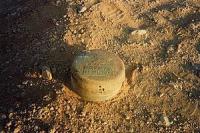
About half a million people around the world are suffering from mine-inflicted injuries, and each year an additional 15 to 20 thousand more people are injured or killed by these devices. More than 100 million such devices are still buried in over seventy countries. The major technical challenge in clearing minefields is detecting the mines. Researchers have developed a potential answer to this urgent need: a novel, functional system combining lasers and bacteria to remotely map the location of buried landmines and unexploded ordnance.
-
-
Hack-resistant hardware

Military and civilian technological systems, from fighter aircraft to networked household appliances, are becoming ever more dependent upon software systems inherently vulnerable to electronic intruders. DARPA has advanced a number of technologies to make software more secure. But what if hardware could be recruited to do a bigger share of that work? That’s the question DARPA’s new System Security Integrated Through Hardware and Firmware (SSITH) program aims to answer.
-
-
Super sponge effectively removes toxins from lakes
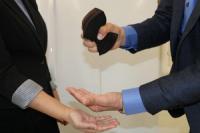
Mercury is very toxic and can cause long-term health damage, but removing it from water is challenging. To address this growing problem. Researchers have created a sponge that can absorb mercury from a polluted water source within seconds. The sponge converts the contamination into a non-toxic complex so it can be disposed of in a landfill after use. The sponge also kills bacterial and fungal microbes.
-
-
Reusable sponge soaks up oil, revolutionizes oil spill, diesel cleanup
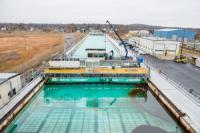
When the Deepwater Horizon drilling pipe blew out seven years ago, beginning the worst oil spill in U.S. history, those in charge of the recovery discovered a new wrinkle: the millions of gallons of oil bubbling from the sea floor weren’t all collecting on the surface where it could be skimmed or burned. Some of it was forming a plume and drifting through the ocean under the surface. Now, scientists have invented a new foam, called Oleo Sponge, that addresses this problem. The material not only easily absorbs oil from water, but is also reusable and can pull dispersed oil from the entire water column—not just the surface.
-
-
Selecting to right first responder technology
With the abundance of tools and technologies available to assist first responders, it is important to address questions such as: How do the tools perform in real-world response situations? Can they withstand uncertain environments? Are they easy to use when a responder is wearing protective gear? How heavy is the technology? Will it weigh down, or fit within the gear of a responder who is already wearing their full kit? To help first responders answer these questions so they can make informed decisions about technology acquisition, DHS Science and Technology Directorate (S&T) First Responders Group (FRG) hosted a 3-day Urban Operational Experimentation (OpEx).
-
-
Study: NIH funding generates large numbers of private-sector patents

Research grants issued by the National Institutes of Health (NIH) contribute to a significant number of private-sector patents in biomedicine, according to a new study. The study, published in the journal Science, examines twenty-seven years of data and finds that 31 percent of NIH grants, which are publicly funded, produce articles that are later cited by patents in the biomedical sector. “The impact on the private sector is a lot more important in magnitude than what we might have thought before,” says one of the researchers.
-
-
Aging U.S. scientific workforce raises concerns
The science and engineering workforce in the United States is aging rapidly, according to a new study. And it is only going to get older in coming years. Economists found that the average age of employed scientists increased from 45.1 to 48.6 between 1993 and 2010, faster than the workforce as a whole. The study estimates that, all else being the same, the average age of U.S. scientists will increase by another 2.3 years in the near future.
-
-
MIT president calls for investing in basic science to maintain U.S. edge
President Trump’s proposed budget slashes at least $7 billion in funding for science programs. That course of action would put the United States at a competitive disadvantage, argues L. Rafael Reif, president of the Massachusetts Institute of Technology (MIT). “Since World War II, the U.S. government has been the world’s biggest supporter of potentially transformative science — which is a key reason why the country continues to have the highest share of knowledge- and technology-intensive industries in the world, amounting to nearly 40 percent of the economy,” Reif writes in the May/June issue of Foreign Affairs.
-
-
NSF-funded research continues to support national security
The National Science Foundation (NSF) is usually associated with supporting scientists who go on to win Nobel Prizes, leading exploration of the planet’s polar regions, and enabling discoveries about the universe, from the subatomic world to distant galaxies. But the foundation also has ties to national defense that go back to its beginnings, as a product of the U.S. government working to enhance security during and after the Second World War. The National Science Foundation Act of 1950 called for the creation of an agency to “promote the progress of science; to advance the national health, prosperity, and welfare; and to secure the national defense.” NSF’s founder, Vannevar Bush, said: “It has become clear beyond all doubt that scientific research is absolutely essential to national security.”
-
-
Nextgen robots for nuclear clean-up
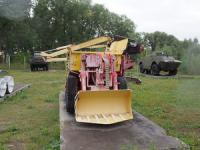
The cost of cleaning up the U.K.’s existing nuclear facilities has been estimated to be between £95 billion, and £219 billion over the next 120 years or so. The harsh conditions within these facilities means that human access is highly restricted and much of the work will need to be completed by robots. Present robotics technology is simply not capable of completing many of the tasks that will be required. A research a consortium to build the next generation of robots that are more durable and perceptive for use in nuclear sites.
-
-
Detecting weapons-grade uranium from afar
It is hard enough to identify nuclear materials when you can directly scan a suspicious suitcase or shipping container. But if you cannot get close? A technique for detecting enriched uranium with lasers could help regulators sniff out illicit nuclear activities from as far as a couple of miles away.
-
-
Reusable sponge could revolutionize oil spill and diesel cleanup
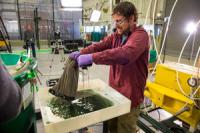
When the Deepwater Horizon drilling pipe blew out seven years ago, beginning the worst oil spill in U.S. history, those in charge of the recovery discovered a new wrinkle: the millions of gallons of oil bubbling from the sea floor weren’t all collecting on the surface where it could be skimmed or burned. Some of it was forming a plume and drifting through the ocean under the surface. Now, scientists have invented a new foam, called Oleo Sponge, that addresses this problem.
-
More headlines
The long view
New Technology is Keeping the Skies Safe
DHS S&T Baggage, Cargo, and People Screening (BCP) Program develops state-of-the-art screening solutions to help secure airspace, communities, and borders
Factories First: Winning the Drone War Before It Starts
Wars are won by factories before they are won on the battlefield,Martin C. Feldmann writes, noting that the United States lacks the manufacturing depth for the coming drone age. Rectifying this situation “will take far more than procurement tweaks,” Feldmann writes. “It demands a national-level, wartime-scale industrial mobilization.”
How Artificial General Intelligence Could Affect the Rise and Fall of Nations
Visions for potential AGI futures: A new report from RAND aims to stimulate thinking among policymakers about possible impacts of the development of artificial general intelligence (AGI) on geopolitics and the world order.
Keeping the Lights on with Nuclear Waste: Radiochemistry Transforms Nuclear Waste into Strategic Materials
How UNLV radiochemistry is pioneering the future of energy in the Southwest by salvaging strategic materials from nuclear dumps –and making it safe.
Model Predicts Long-Term Effects of Nuclear Waste on Underground Disposal Systems
The simulations matched results from an underground lab experiment in Switzerland, suggesting modeling could be used to validate the safety of nuclear disposal sites.
